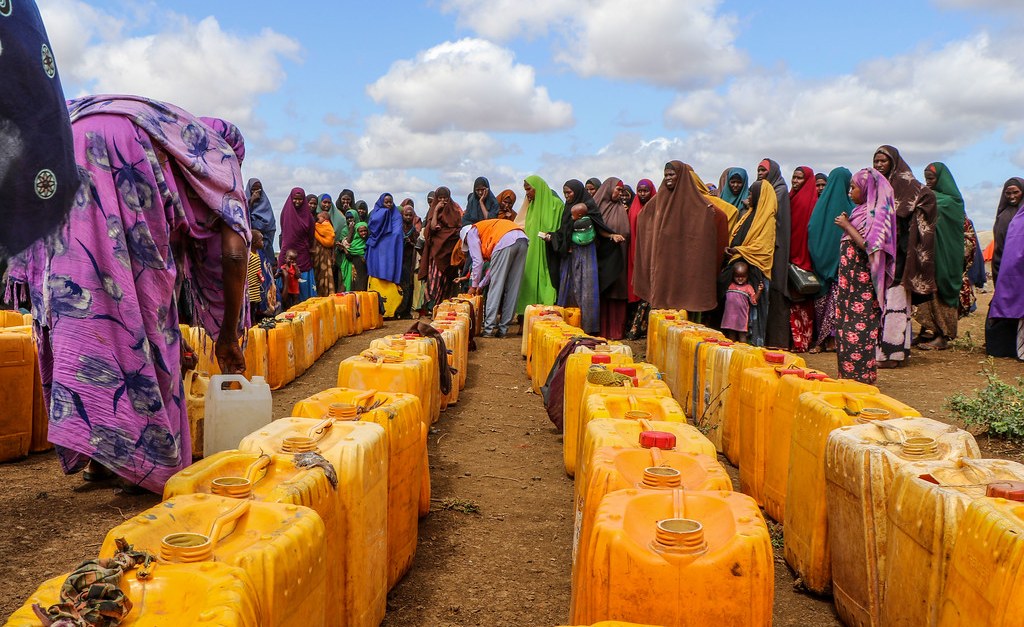New Orleans — When I first met Dr. Roland Bunch, I have to be honest–he scared me. As one of the most well-respected leaders on agronomy and resilient land management, he offers extremely prescient predictions on how famines take root when soils fail–and also has an admirably clear-eyed view of what we need to do better.
When we first met in the mid-2000s, I was at the Worldwatch Institute and invited him to contribute a chapter to a book I was writing. He described how farmers in Malawi and other countries in Sub-Saharan Africa were noticing their soil was getting tired.
Maize yields were unpredictable and decreasing year to year–problematic when that’s the crop you depend on most for both consumption and sale to earn your livelihood. Droughts were a major concern, but Dr. Bunch understood that farmers were, rightly, more worried about loss of soil fertility.
Droughts and depleted soils can be difficult to distinguish. While fertile soils can soak up and retain what little rain does fall, depleted soils become compacted and water simply runs off, so each problem accentuates the other.
Plus, when farmers are facing infertile soils, they are more likely to move to new areas of land, which unfortunately eats up arable land without regenerating it. And in some cases, folks give up farming altogether and move to cities, where it’s difficult for them to find jobs that match their skills.
He wrote this warning right around the 2007-08 food and financial collapse, which stretched into riots and famines around the globe over the next half-decade. And unfortunately, we may be back where we were then.
Dr. Bunch warns that the coming famine will be a “hurricane of hunger,” which sounds ominous to me and so many of us who work in this space. But things are not hopeless.
Over the past 20 years, one of the so-called solutions that’s been heavily promoted in places like Malawi are fertilizer subsidies and artificial fertilizers – which are not the answer.
We forget that artificial fertilizer should be used sparingly like medicine, to help get farmers over a hump or temporarily boost soil quality to allow for better use of organic matter.
But unfortunately, subsidies have led to farmers becoming dependent on artificial soil amendments and have actively disincentivized growing a more diverse set of crops or using organics to fertilize soils in countries across Sub-Saharan Africa, Latin America, and more.
One of the answers to what we’re seeing around soil infertility are cover crops and ‘green manure’ (which refers not to colorful animal poop but rather the practice of growing certain crops to turn or incorporate back into the soil).
These can be things like bushes, trees, and vines that help improve soil quality, control weeds, and retain water. Other great options are crops like cowpeas and scarlet runner beans, which people can eat.
This is something else we often forget when we’re talking about how to keep folks from being hungry: The foods people have depended on for generations are not only regenerative but also delicious! Farmers have an opportunity, Roland says, to return to growing these indigenous crops – sometimes called forgotten crops or orphan crops – that are resilient to droughts, have deep root structures to keep water and nutrients in soils, grow perennially so they don’t need to be replanted every year, and taste really, really good.
Between crises like climate change, soil depletion, global conflicts, and Covid’s supply chain fallout, the bottom line – and it’s a sobering one – is that we’re facing a massive famine and that “hurricane of hunger” over the next year.
I’ve talked before in this newsletter about the power of citizen eaters and the participatory democracies Frances Moore Lappé advocates for – but for these ideas to actually translate into powerful results, we need governments that are actively engaging in agriculture.
Roland says it’s possible to end hunger in one generation, and quite inexpensively, but only if we have the will to do so. We’ll need action from leaders in policy, business, and more to invest in helping farmers adopt greener, more regenerative soil practices.
As he says, better soils lead to better lives – which is more urgent now than ever before.
I want to thank and commend Dr. Roland Bunch for his leadership and – seriously – for scaring me. His predictions not only frighten me but also give me hope. He tells us how bad things can be – but also how good things can be if, again, we have that political engagement.
I’ve included more writing from Dr. Bunch and other luminaries in the Learn More section below, and as always, please shoot me an email at danielle@foodtank.com with your perspectives and ideas for how we move forward.
Danielle Nierenberg is President of Food Tank and an expert on sustainable agriculture and food issues. She has written extensively on gender and population, the spread of factory farming in the developing world and innovations in sustainable agriculture.
IPS UN Bureau
Follow @IPSNewsUNBureau
Follow @DaniNierenberg
Source link

